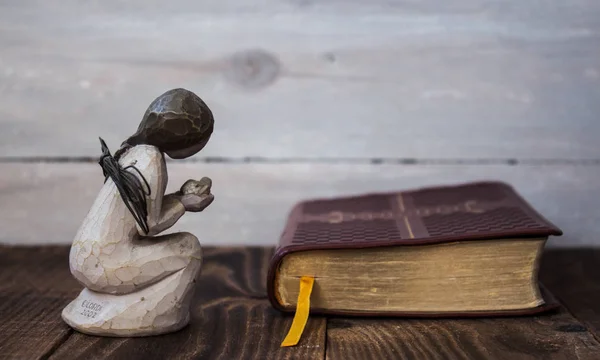
The term “alacran” holds a unique place in both linguistic and cultural contexts, serving as more than just a name for scorpions. For centuries, the alacran has symbolized resilience, protection, and even mysticism in many cultures, particularly in Spanish-speaking regions. This article delves into the various meanings, cultural significance, and symbolic interpretations surrounding the alacran to provide readers with a comprehensive understanding of its multifaceted nature.
The Origins of the Term “Alacran”
The term “alacran” has origins deeply embedded in ancient languages and cultural beliefs. In Spanish, “alacran” directly translates to “scorpion,” a creature known for its defensive and resilient nature. Historically, the word “alacran” emerged in regions where scorpions were common, and they quickly became symbols of protection and strength. By tracing the etymology of “alacran,” we uncover how this word has developed through centuries, carrying with it associations of survival and vigilance.
Alacran in Ancient Folklore
In folklore, the alacran occupies a place of power and reverence. Many cultures view scorpions as creatures with mystical powers due to their ability to defend themselves against larger threats. Stories and legends have portrayed the alacran as a protective force capable of warding off evil and danger, symbolizing the constant battle between life’s challenges and the strength to overcome them.
The Symbolism of Alacran Across Cultures
The symbolism of the alacran is both diverse and profound. From ancient myths to modern beliefs, the alacran has come to represent resilience, vigilance, and protection. In regions where alacran sightings are common, people have created charms, symbols, and even spiritual rituals to honor this resilient creature. Its image is found in art, jewelry, and amulets, symbolizing the values of courage and self-defense.
What Does Alacran Mean in Mythology and Spirituality?
The alacran carries a rich mythology, particularly in spiritual contexts where animals represent forces greater than themselves. The meaning of alacran in mythology often revolves around protection, change, and adaptability. In many indigenous cultures, the alacran is seen as a symbol of spiritual resilience. Myths about the alacran highlight its role as a guardian figure, offering both physical and spiritual protection.
The Spiritual Meaning of Alacran in Dreams and Symbols
Dreaming of an alacran or seeing its symbol in art is often interpreted as a call for self-protection and awareness. In spiritual practices, the alacran represents introspection and the courage to confront hidden fears. Seeing an alacran in dreams is thought to symbolize the need to defend oneself against potential harm or to prepare for a transformative experience. Such dreams reflect our subconscious fears and the strength needed to face them.
Alacran as a Spirit Animal or Totem
The alacran is regarded as a spirit animal or totem in many indigenous and spiritual traditions. Those who connect with the alacran as a totem animal are thought to possess qualities of resilience, strength, and vigilance. As a spirit animal, the alacran encourages individuals to remain alert, embrace transformation, and protect themselves from negativity. People often look to the alacran for guidance in difficult times, seeing it as a symbol of endurance and spiritual awareness.
Cultural Interpretations of the Alacran in Different Regions
In different cultures, the alacran takes on varying interpretations, shaped by the unique values of each region.
These cultural interpretations underscore the universal values of self-protection and perseverance that the alacran represents.
Alacran Symbolism in Spanish and Latin American Cultures
In Spanish and Latin American folklore, the alacran is viewed as a potent symbol of protection and resilience. The creature’s ability to survive in harsh environments has made it an emblem of survival and courage, qualities that resonate deeply within these cultures. Folktales often feature the alacran as a guardian figure, safeguarding against danger and embodying the spirit of resilience.
Alacran in Modern Symbolism and Popularity
Today, the alacran continues to serve as a popular symbol, especially in art, jewelry, and tattoos. The modern symbolism of the alacran often centers on themes of personal empowerment and resilience, making it a favored emblem for those who seek to convey strength through their style. From intricate jewelry designs to bold tattoo motifs, the alacran represents an individual’s resolve to face challenges head-on.
The Alacran Symbol in Modern Art and Jewelry
Alacran is a Symbol of Strength and Protection
The alacran’s qualities of strength and defense make it an ideal symbol for those seeking empowerment. Individuals who choose to wear alacran symbols often feel a connection to its message of self-protection and courage. The alacran reminds its bearers of their inner strength and resilience, making it a meaningful symbol for those facing personal challenges.
Common Interpretations and Meanings of Alacran
The common meanings associated with the alacran reflect its status as a creature that embodies resilience and strength. Its presence in mythology, art, and spirituality offers various interpretations, from a symbol of self-defense to an emblem of spiritual awareness.
Traditional vs. Modern Meanings of Alacran
Historically, the alacran symbolized mystical protection and resilience. While these themes persist, modern interpretations have evolved to focus on personal empowerment and inner strength. Today’s symbolic meaning of the alacran encourages people to draw on their inner reserves of strength, reflecting a timeless message of resilience that adapts to contemporary struggles.
Conclusion
The alacran, often recognized as a simple scorpion, carries a deep symbolic weight that spans history, mythology, and personal meaning. Across cultures, it represents resilience, vigilance, and protection—qualities that make it a powerful emblem in folklore and modern symbolism alike. From ancient myths viewing the alacran as a mystical protector to contemporary jewelry where it signifies inner strength, the alacran resonates with those seeking courage and self-defense in life’s challenges. Understanding its diverse meanings allows us to appreciate the alacran as more than just a creature but as a symbol that inspires and protects across time and tradition.
FAQs
What does it mean when you see an alacran in a dream?
Seeing an alacran in a dream often symbolizes the need for vigilance or protection. It may suggest that the dreamer is facing a challenge or needs to adopt a more resilient approach to a current issue.
What is the cultural significance of alacran in Latin America?
In Latin American cultures, alacran represents strength, protection, and resilience.
The alacran symbol is popular in jewelry due to its association with protection and strength. Wearing alacran jewelry is a way to carry a reminder of resilience and courage in everyday life.
What is the meaning of the alacran as a spirit animal?
As a spirit animal, the alacran signifies adaptability, strength, and vigilance. It inspires people to embrace resilience and stay prepared for challenges, symbolizing courage and self-reliance.



